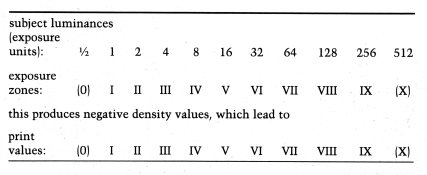DREW WILEY
Member
- Joined
- Jul 14, 2011
- Messages
- 14,575
- Format
- 8x10 Format
Gosh. I go out of my way to tangle with tricky and extreme lighting situations. With the cost of 8x10 film, it stings when the lighting
suddenly changes during the shot. But playing cat and mouse with shifting clouds and intricate shadow patterns is a game I absolutely love.
Having the right film along for such conditions certainly helps. And I've done my homework in advance. But ultimately, everything is related
to how you print also - what paper, developer, intended look. The Zone System is just another potential tool in your mental tool box. It's
ridiculous to make a religion out of it, or try to quantify everything. I use it more as a common denominator communication tool, like on these forums, than in relation personal shooting. What I really do, I suspect, is almost instantly visualize the placement of the shadow, mid, and highlight readings on the actual curve of any film I happen to be using, based on lots of prior experience. This happens almost subconsciously, spontaneously, and I rarely goof unless the light does suddenly change. So in that respect, dividing the world into artificially segmented "Zones" would actually be a step backwards. However, learning the Zone System did help back when I was just starting out.
suddenly changes during the shot. But playing cat and mouse with shifting clouds and intricate shadow patterns is a game I absolutely love.
Having the right film along for such conditions certainly helps. And I've done my homework in advance. But ultimately, everything is related
to how you print also - what paper, developer, intended look. The Zone System is just another potential tool in your mental tool box. It's
ridiculous to make a religion out of it, or try to quantify everything. I use it more as a common denominator communication tool, like on these forums, than in relation personal shooting. What I really do, I suspect, is almost instantly visualize the placement of the shadow, mid, and highlight readings on the actual curve of any film I happen to be using, based on lots of prior experience. This happens almost subconsciously, spontaneously, and I rarely goof unless the light does suddenly change. So in that respect, dividing the world into artificially segmented "Zones" would actually be a step backwards. However, learning the Zone System did help back when I was just starting out.








